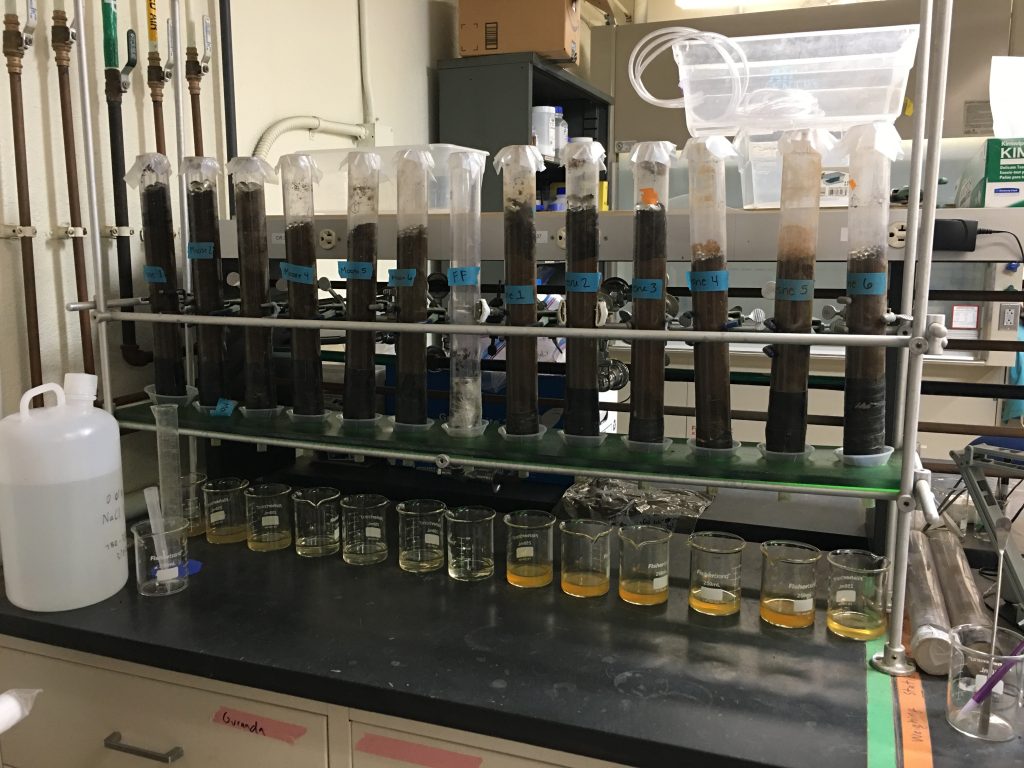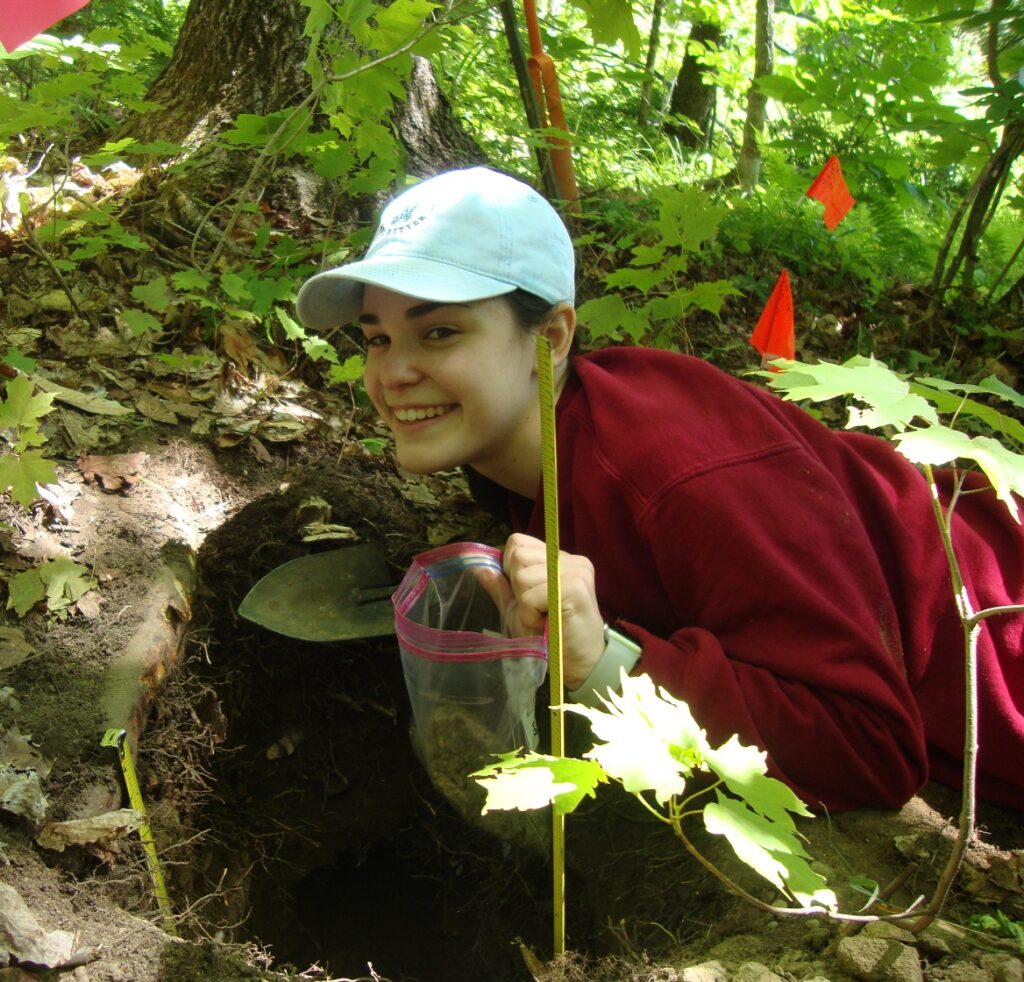A big congratulations to Bailee Street for completing her senior thesis:
“Nutrient and Trace Metal weathering and transport from Forest Soils Under Forest Floor and Na Azide Treatments”
It was a long journey to design the experiment, conduct the leaching experiments, solve issues with the adsorption experiments, and the tough slog of writing. After analyzing hundreds of samples on the ICP-OES and ICP-MS and many iterations of figures using python, the thesis is complete!
The abstract is below:
“
Altering organic matter production is an important ecosystem factor that will be impacted by climate change. As areas see increased temperatures and changing weather patterns, areas that might have once had no forest floor production (the buildup of litterfall on the soil surface) may see an increase while other areas that once thrived with forest floor, may be left barren. My project used soil column experiments to determine if the forest floor impacted dissolution and transport of macroelements (Al, Fe, Si, Mn), macronutrients (Ca, Mg, K, P), micronutrients (Cu and Zn), and trace elements (As, Cr, Pb). It also tests the impact of forest floor on different aged soils (Moosiluake NH and Lesesne VA) as well as the involvement of microbes in this dissolution process by using Na azide to suppress microbial activities. Each element differed in its response to different treatments, but overall, there was an effect on leaching for the majority of the elements when comping forest floor additions. There was also a difference between soils in all elements except for P. Na azide was also seen to affect all dissolved elemental masses measured except for As in the Moosilauke soil and all elements except for K in the Lesesne soil. These results show that nutrient composition could be altered in the future with a changing climate. If climate change impacts the organic matter in forest ecosystems, then nutrient availability may change and cause a negative impact on plant life as they cannot receive the necessary nutrients to grow.”

